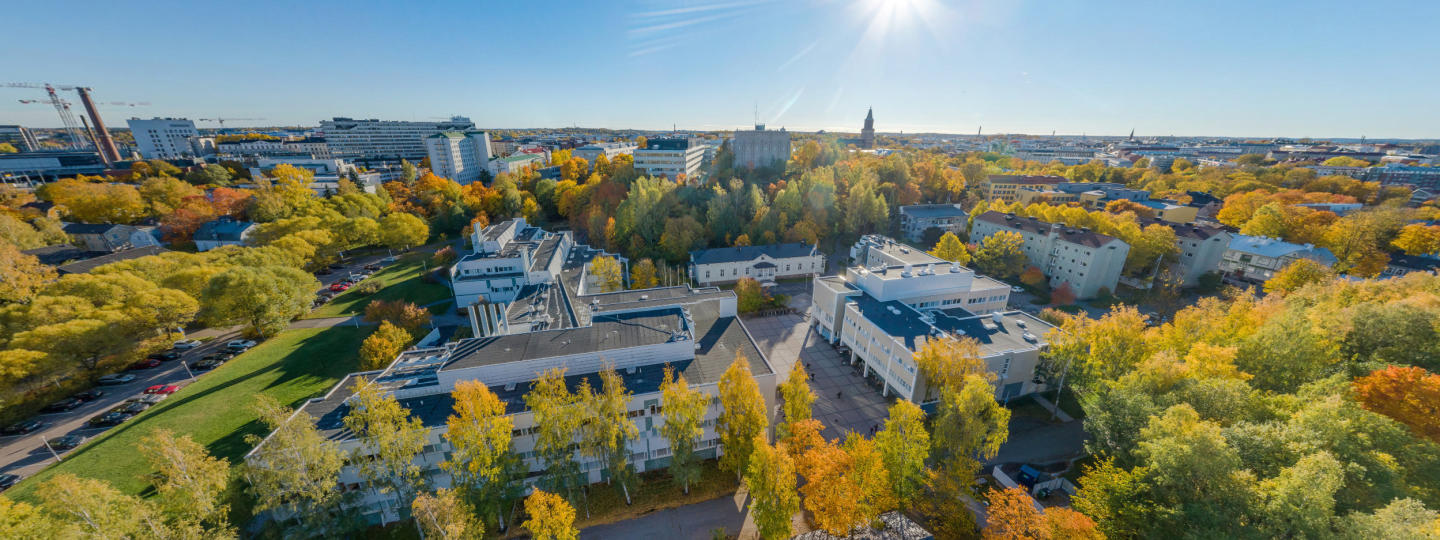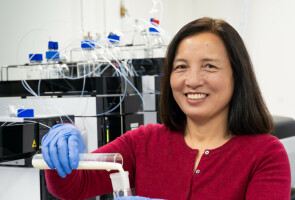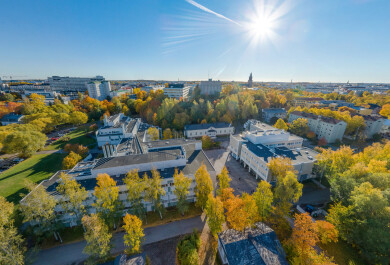The University of Turku has completed an estimate of the University’s carbon footprint. The largest contributors to greenhouse gas emissions are properties and travel, especially flights. In addition, the carbon footprint of laboratories and other experimental research was significant.
The University of Turku is committed to becoming carbon neutral by the end of 2025. To achieve this goal, the University’s Steering Group for Sustainable Development set a separate project group last August to make an estimate of the current carbon footprint of the University’s properties and activities.
The work started with an assessment of what is the best way for universities to define their footprint.
– In Finland, we are pioneers in calculating universities’ carbon footprint for there has been no readily-available calculation guidelines for universities. Therefore, we had to evaluate the situation from the beginning and plan how we will define and implement the carbon footprint calculation of our different activities, says Vice Rector Kalle-Antti Suominen, who is also the chair of the project group.
The goal of estimating the carbon footprint was to gain approximate numbers and information about the scope of the University’s greenhouse gas emissions and the largest contributors. The group could to some extent use existing calculators in assessing the emissions caused by travelling. However, there are no ready-made calculators for evaluating the footprint of laboratory equipment, for example, so the emissions were estimated on the basis of the costs. The same method has been used in the carbon footprint calculation at the Norwegian University of Science and Technology.
Properties and Travel the Largest Contributors to Carbon Dioxide Emissions
The carbon footprint of the University of Turku is approximately 28,200 tonnes of CO2 equivalent based on the 2018 information of the University’s activities. The number also includes the daily lunches of the entire University community as well as personnel’s commute. Without these factors, the carbon footprint is approximately 23,000 tCO2eq.
The University’s most significant contributor of carbon dioxide emissions is properties. The University aims to cut down the carbon footprint of the properties and especially the district heating used in the buildings. For example, geothermal heating will be used in the air conditioning of the new Aurum building that will be completed next year.
After the properties, the second largest contributor is travelling that makes up about one third of the University’s carbon footprint. By far the largest share of the emissions from travelling is caused by flights.
– International research requires travelling and at least for now we are not going to restrict our researchers’ travels. We will of course encourage our personnel to use direct flights and avoid flying with shorter distances, says Vice Rector Suominen
Despite Its Carbon Footprint, Laboratory Research Is Essential for Sustainable Development
The University’s strength in biomedical research is evident in that approximately a fifth of the University’s carbon footprint is caused by research equipment, chemicals and laboratory materials.
– It is important to note that even though laboratory research produces carbon dioxide emissions it also has a great significance in advancing sustainable development. Researchers at our laboratories develop, for example, carbon neutral biofuels and other climate positive solutions, says Suominen.
The University already has tools for reducing the carbon footprint of laboratories, such as promoting the joint procurement and use of research equipment and chemicals.
Defining Carbon Footprint Is Part of University’s Strategic Work on Sustainable Development
The contribution of the University’s other activities to the total carbon footprint is small. These include, for example, procurements, logistics, cleaning and personnel’s commute. On the other hand, these activities are part of the University community’s daily routines and therefore considering them is an important part of promoting an environmentally-conscious culture.
The calculation of the carbon footprint continues and the goal is to specify the results that are still rough estimates as well as to follow the emissions on an annual basis. The work to achieve the goal of carbon neutral University continues under the coordination of the Steering Group for Sustainable Development. The reduction of the carbon footprint is part of the University's extensive activities in sustainable development.
– Universities have an important role in regionally, nationally and internationally in the promotion of sustainable development r. We educate future experts for the different sectors of society who will have internalised the principles of sustainable development. We also produce reliable research information to support decision-making as well as concrete solutions, for example, for sustainable energy production. Furthermore, our work aims to preserve and protect biodiversity, says Vice Rector Mika Hannula, who is the chair of the Steering Group for Sustainable Development.
The University of Turku emphasises sustainable development as a cross-cutting theme in all its activities. Sustainable development is also at the heart of the University’s new strategy and policy programme for 2021–2030.





